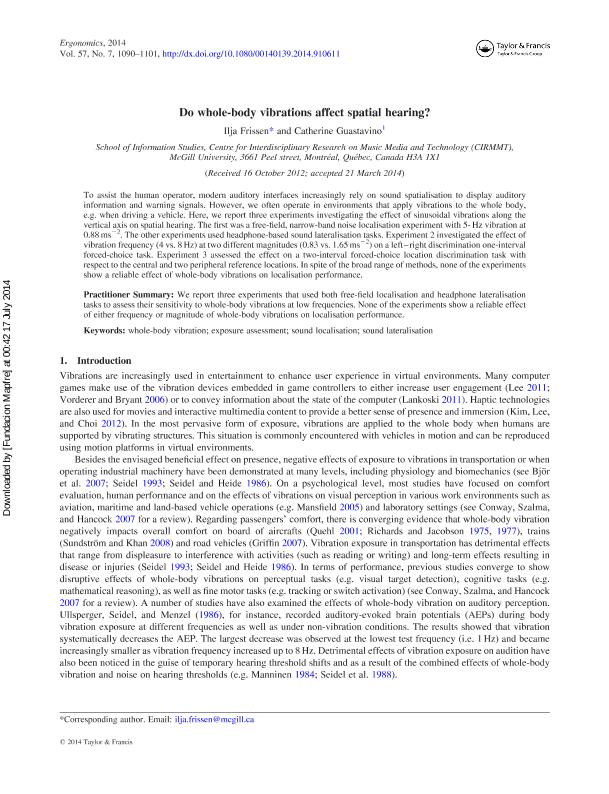Do whole-body vibrations affect spatial hearing?

Contenido multimedia no disponible por derechos de autor o por acceso restringido. Contacte con la institución para más información.
| Tag | 1 | 2 | Valor |
|---|---|---|---|
| LDR | 00000cab a2200000 4500 | ||
| 001 | MAP20140025909 | ||
| 003 | MAP | ||
| 005 | 20140724124912.0 | ||
| 008 | 140717e20140707esp|||p |0|||b|spa d | ||
| 040 | $aMAP$bspa$dMAP | ||
| 084 | $a875 | ||
| 100 | 1 | $0MAPA20140012176$aFrissen, Ilja | |
| 245 | 1 | 0 | $aDo whole-body vibrations affect spatial hearing?$cIlja Frissen, Catherine Guastavino |
| 520 | $aTo assist the human operator, modern auditory interfaces increasingly rely on sound spatialisation to display auditory information and warning signals. However, we often operate in environments that apply vibrations to the whole body, e.g. when driving a vehicle. Here, we report three experiments investigating the effect of sinusoidal vibrations along the vertical axis on spatial hearing. The first was a free-field, narrow-band noise localisation experiment with 5- Hz vibration at 0.88 ms- 2. The other experiments used headphone-based sound lateralisation tasks. Experiment 2 investigated the effect of vibration frequency (4 vs. 8 Hz) at two different magnitudes (0.83 vs. 1.65 ms- 2) on a leftright discrimination one-interval forced-choice task. Experiment 3 assessed the effect on a two-interval forced-choice location discrimination task with respect to the central and two peripheral reference locations. In spite of the broad range of methods, none of the experiments show a reliable effect of whole-body vibrations on localisation performance. | ||
| 773 | 0 | $wMAP20100019818$tErgonomics : the international journal of research and practice in human factors and ergonomics$dOxon [United Kingdom] : Taylor & Francis, 2010-$x0014-0139$g07/07/2014 Volumen 57 Número 7 - julio 2014 |

